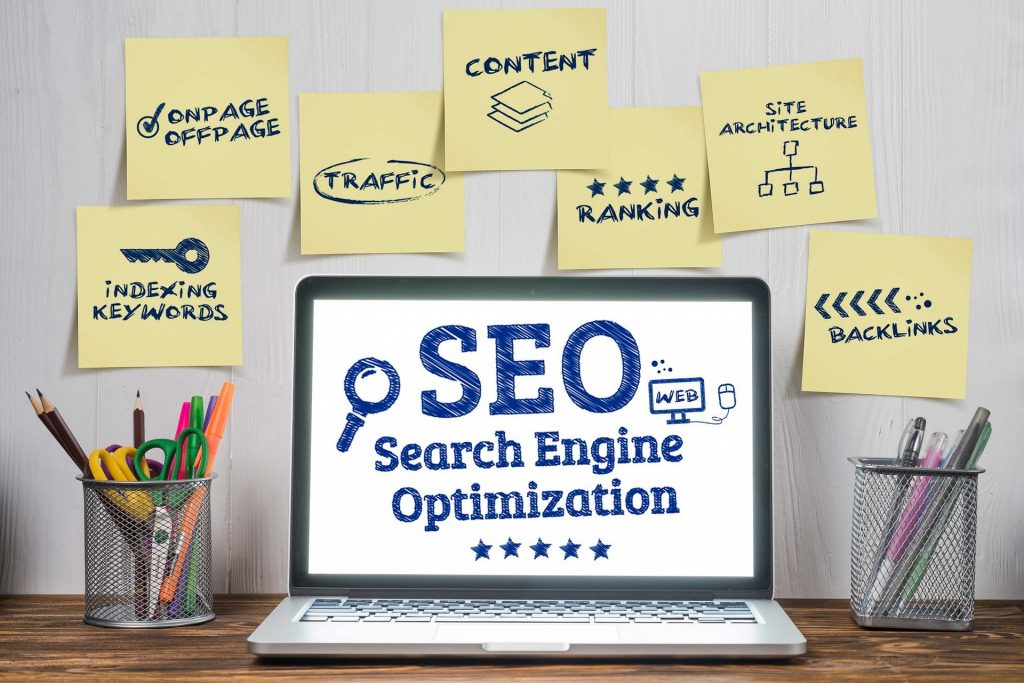Incorporating long-form into your content marketing strategy can help you boost your search rankings, influence purchasing decisions, increase engagement, build a relationship with your audience, and most importantly, keep them coming back for more.
SEO Guru Neil Patel covers only 4000+ word articles on his website neilpatel.com. The result: His blog crossed 100,000 visitors/month within the first year itself!
As you can see, long-form content can make all the difference in growing your business.
Read on for the complete guide to long-form content — from why it’s important to how you can start using it today.
What is long-form content?
Long-form content refers to text that is over 1,000 words with a maximum length of 7,000 – 10,000 words. It provides detailed and comprehensive coverage of a topic while providing tremendous value to the reader.
The beauty of long-form content lies in its quality, depth, and value. Instead of merely skimming the surface, you provide an all-inclusive look at a particular topic, delving deep into the meat of the subject matter.
It’s essential to provide enough context and coverage to give your audience the information they’re seeking.
Types of long-form content

Long-form content can come in many forms, such as:
- Comprehensive blog posts (e.g., The Beginner’s Guide to Fencing)
- In-depth guides and step-by-step tutorials (e.g., How to Make Pasta from Scratch?)
- Pillar pages (e.g., What is content marketing?)
- Case studies (e.g., How Toyota Boosted its Revenue by 18% with a Manufacturing Change)
- E-books (e.g., What I Wish I Knew Before I Started Freelancing)
- White Papers (e.g., Employee Productivity in a post-pandemic world)
- Research reports (e.g., Poverty and Health: The Direct Correlation)
- Checklists (e.g., 30 things to do before launching your blog)
- Detailed newspaper articles (e.g., The Hidden Story Behind the Super Bowl Win)
- Q&A’s or interviews (e.g., Meet the man behind Tesla: Elon Musk)
How long should a piece of long-form content be?

Before writing long-form content, your first consideration should be whether the topic warrants that treatment.
If your topic or keyword isn’t big enough, consider saving it for a shorter piece of content.
It’s also important to ask yourself what is it you’re trying to achieve with your long-form content?
My recommendation is that anything less than 1,000 words probably isn’t enough. The sweet spot is usually between 2,000 to 4,500 words. Anything more than 6,000 words would be pretty excessive and likely too much for most audiences.
Why create long-form content?

Long-form content is becoming increasingly important as it helps build trust, authority, and credibility. Here are some more reasons why businesses should incorporate long-form pieces in their content strategy:
A powerful driver of search traffic
Search engines prefer long-form content, generating organic traffic for your website as a result. It helps increase reach by exposing your website to new prospects.
Additionally, such content covers a broader range of topics, so it may be a good match for multiple keywords, allowing you to gain traction.
More comprehensive
Long-form content allows you to provide in-depth analysis and tell a story in greater detail. You can present your points more persuasively and make connections between them that might not be apparent in short-form writing.
Longer pieces also typically lend themselves to being broken down into smaller sections — ideal for presenting different types of information (e.g., text, video, data visualization) that may appeal to both visual learners and other audiences.
Providing detailed coverage of a topic in one easily accessible place is a great way to share expertise and explain complex ideas in simple terms.
This helps build interesting conversations, loyalty, and relationships with your readers.
Builds your brand and trustworthiness
Building your brand is all about establishing yourself as an authority in your niche. You want to be known as a trustworthy source for information and advice on a particular topic so that when people are looking for guidance in that area, they come to you.
Creating long-form content is one of the best ways to do this.
Let’s say you’re trying to learn how to fix something wrong with your car. Would you rather get advice from a mechanic who has spent years learning their craft or someone who just read up on the topic once?
Obviously, you’ll feel more confident taking advice from a professional.
Long-form content does precisely that i.e. position you as an expert. This isn’t just good for making people trust what you have to say; it can also convince them that you’re worth following, signing up for an email list with, or buying something from.
Better user experience
As long-form content is highly detailed, readers can consume knowledge in one place rather than having to click around.
It also gives your audience information that they can follow and make sense of, rather than summaries or links to other pages on the site that they’re unlikely to read anyway.
Improves conversion rates
Long-form content allows for in-depth exploration of a topic or idea, which can increase engagement and time spent with your brand. This results in higher chances of conversion.
When readers can attain something meaningful out of an article without wasting their time, they’re far more likely to take action.
The best of the best long-form content (examples)

Want to explore some great examples of long-form content on the internet? Here you go:
- HubSpot: The Ultimate Guide to the Best Productivity Apps
- Olive & Company: The Definitive Guide to Branding
- Ahrefs: Content Creation – The Ultimate Guide for Beginners
- Optimizely: Optimization Glossary
- The Atlantic (Ta-Nehisi Coates): My President Was Black
Top Tips for Creating Engaging Long-form Content

Long-form content is a great way to build authority within your niche and drive organic traffic to your website. But how can you craft high-quality and compelling long-form pieces?
We’ve got you covered! Keep the following tips in mind before working on your next project:
Identify your target audience
Who are you writing this content for? Are they looking for something specific? Are they searching for answers to questions they have about a particular topic?
It’s vital to create content relevant to the needs of your ideal customer.
This means thinking about your value proposition, the audience you want to attract, and how you can solve their problems.
For example, if you run a website about home improvement, you may want to create how-to guides on installing a window AC unit or painting a room.
Clearly define your objective for the content
What exactly do you want to achieve with your long-form content? Is it to educate, entertain, or persuade your audience?
This will guide your writing style and tone.
For example, if you want to inform your audience about a topic, you may choose to write in a factual manner. If you’re going to entertain, you may decide to tell a story. Or, if you want to persuade the reader, you may choose to share personal experiences.
Research is key
It’s essential to know your topic inside out. Read blogs and books, watch videos, talk to subject-matter experts, and scour the internet for information.
The longer the piece, the more time and energy you’ll have to put into it, so it’s important to set yourself up for success.
Flesh out a detailed outline
It’s easy to go off-tangent when crafting a long-form piece. Outlining your content helps you:
- See the finished work clearly in your head before you start writing
- Create a layout that makes sense and is easy to follow
- Save time by minimizing unnecessary research
- Make sure that all the crucial points are covered
Craft an engaging headline
Your headline is the first thing your audience sees. It can either entice the reader to click on your link or discourage them from doing so.
Thus, it can make or break your content.
Your headline should grab the reader’s attention and give them a clear idea of what they can expect from reading the piece.
Here are some suggestions to craft a click-worthy headline:
- Keep it specific, short, and include keywords
- Use words that trigger an emotional response (eg: explore, delve)
- Use numbers, include a question, or add humor where possible
- Keep it ‘actionable’ to encourage readers to click and learn more.
Structure your content well and make it easy to read
Long-form content should be easy on the eyes, so make sure your article is well-structured.
Keep your paragraphs short and sweet, and include a table of contents. Break the content up with subheadings, lists, bullet points, bold, italics, quotes, and plenty of white space. This gives your content a visual structure, offers a digestible format, and makes it easier for readers to navigate through the material to find specific information quickly.
The content also needs to flow logically. All supporting data must tie back into one cohesive narrative.
Use visual elements
Visual content is an essential part of any long-form piece. Whether it’s images, infographics, GIFs, embeds, or videos, such elements help tell stories and convey information.
It helps readers visualize and understand concepts without having to read text. For example, a video explaining how to install a window air conditioner would be much easier to follow than a written description.
Include a compelling call-to-action (CTA)
A fundamental purpose of long-form content is to educate your audience about a problem and then provide a solution while encouraging them to take action. This could include signing up for an email newsletter, exploring more articles, joining a community, or buying a product or service.
Make it abundantly clear what you want your readers to do next.
It’s a win-win situation. Your reader gets valuable information on their desired topic, and you get more conversions.
You might be surprised to know that anchor text CTAs in blogs increase conversion rates by up to 121% over banner ads?
Long-form content and SEO

Long-form content is a powerful marketing tool and performs exceptionally on the SERPs (Search Engine Result Pages). The average word length for a blog ranking in the top five positions on Google is around 1,800 words.
And the higher up you rank, the more traffic you’ll receive from organic sources.
According to Semrush, long-form content generates eight times more page views and nine times more leads than short-form content.
Longer pieces also attract more backlinks from other websites and blogs (a critical SEO ranking factor). This is because they’re rich in context and detail, making them a valuable resource for readers.
Additionally, long-form content encourages readers to spend more time on your website. This helps increase the average dwell time and reduces the bounce rate of your website. Google tends to rank sites with lower bounce rates higher since it indicates visitors are satisfied with the content on the site and are eager to explore other pages.
Social sharing is also an integral part of the digital marketing mix. Long-form content provides immense value which makes people want to share them, giving your business a leg-up on the competition.
To summarize, long-form content results in higher search rankings, additional backlinks, reduced bounce rates, increased time on site, more social shares, and better conversion rates.
It’s in for the win!
Long-form content vs Short-form content: What’s the difference?

Both long-form and short-form content are essential to content marketing. However, their use differs depending on your goals and industry. Here are five key differences between these formats:
Word Count
Long-form content is generally over 1,000 words long. This allows for more in-depth information that can provide more value for readers.
Conversely, short-form content refers to concise and digestible written content less than 1,000 words in length. This includes social media captions, emails, ads, tweets, and short blogs.
Production Time
Short-form content tends to be easier to produce and consume, while long-form content requires more research, planning, and time to create.
For example, you can write captions in minutes or hours while long-form content such as pillar pages or guides takes days or weeks to create.
To reduce the time spent writing long blogs or articles, try ContentBot. We help you craft quality content in a fraction of the time typically required.
Shelf Life
The life span of both content formats is drastically different.
Short-form content has a relatively shorter shelf life and can become outdated quickly. On the other hand, long-form articles have more staying power due to evergreen topics that remain relevant over time. These posts can continually generate traffic even many years after they are published.
Engagement and Shares
Short, bite-sized pieces take less time to read, skim, or scan through; making it easy to grab attention. It’s also highly shareable and is more likely to go viral.
Think about it for a moment. How easy is it to like, comment, or share a social post you like? Just takes the click of a button, right?
No wonder, shorter content is better at driving engagement.
Long-form content takes more time and effort to consume. As a result, it generates fewer social shares than short-form pieces unless it’s a value-filled post or an article about a trending topic.
SEO benefits
Long-form content is often more effective at driving traffic and conversions than shorter pieces. They tend to rank better on search engines as they’re more comprehensive and detailed. Additionally, they’re likely to receive more backlinks and authority.
Successful content marketers incorporate both types of content in their strategy to drive maximum reach.
That’s a Wrap

Long-form content is a powerful weapon when wielded effectively. Higher search engine rankings, loyal readers, better audience relationships, increased organic traffic, more conversions, higher authority, and trustworthiness — the list goes on.
It’s an excellent way to bring readers back to your website time and again, build their psychological attachment to your site, and give them a chance to become leads, followers, customers, subscribers, and fans.
Take the time to focus on good storytelling and value-packed content, and you’ll have your audience hooked on your every word.
Check out more on Content and AI!
- 7 Inspirational Writing Quotes (And What Writers Can Learn From Them) - September 1, 2022
- 5 Effective Ways For Marketing Your Small Business On A Budget - August 24, 2022
- The Importance of Branding for a Small Business (Plus Tips To Get Started) - August 24, 2022
